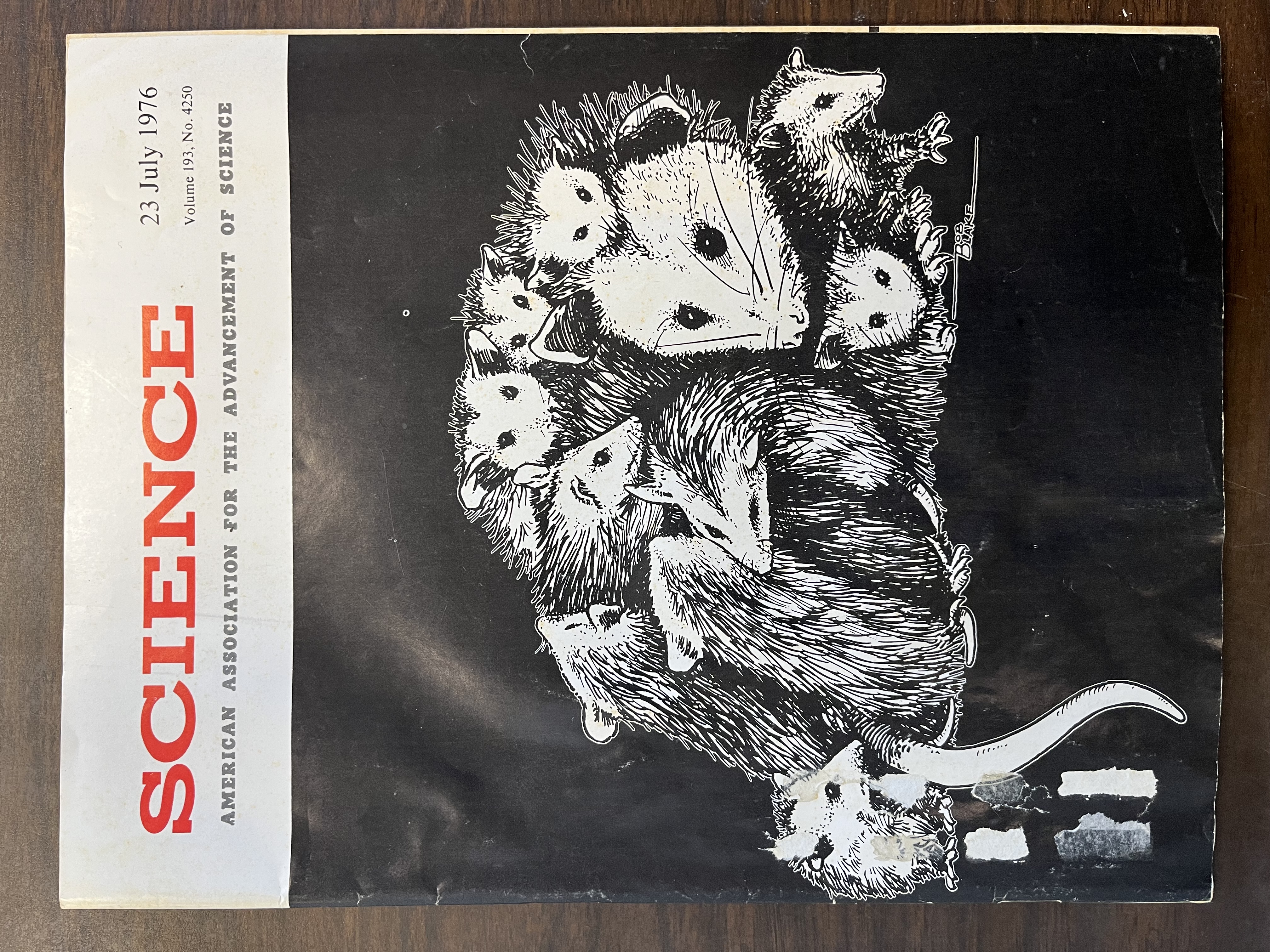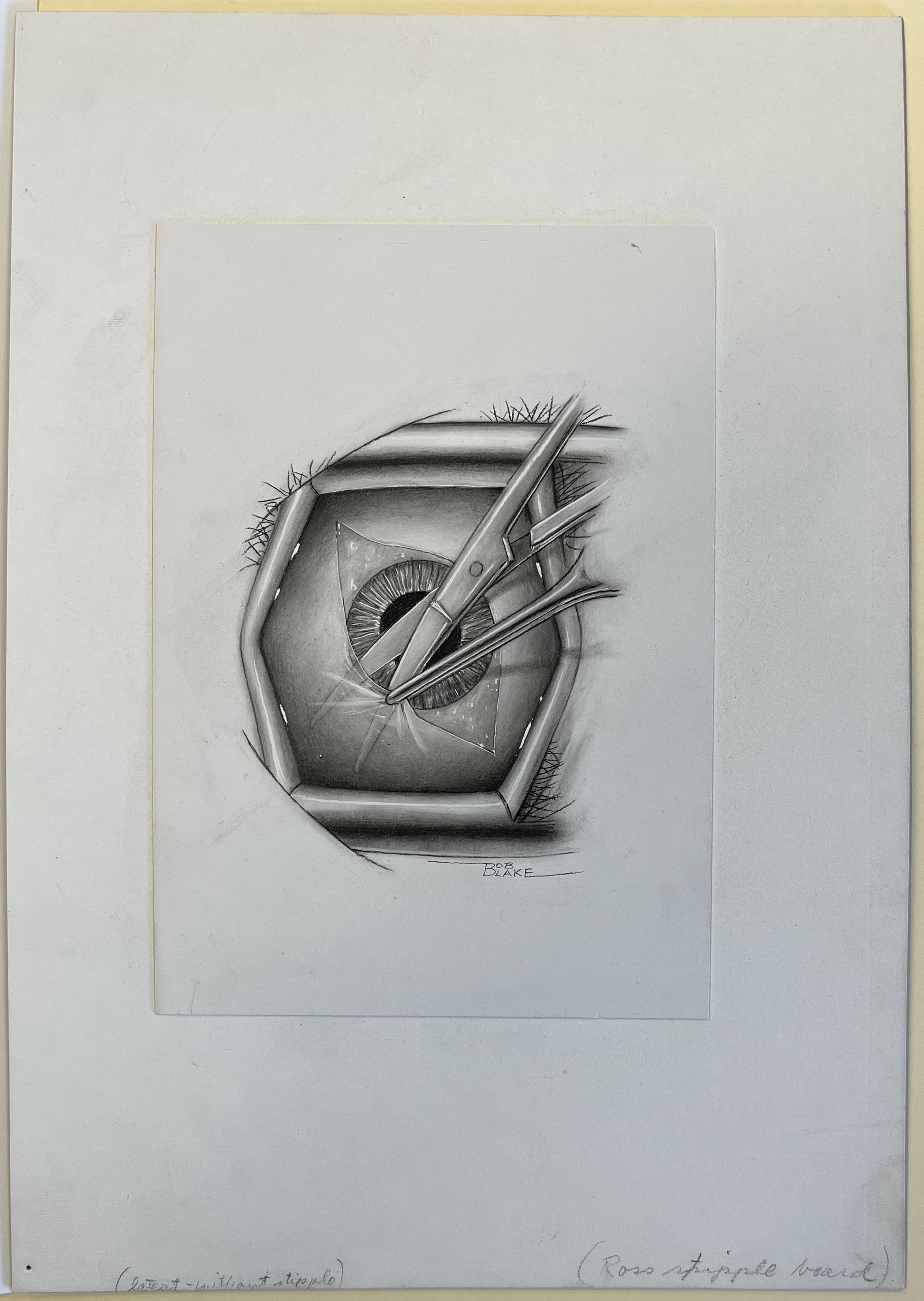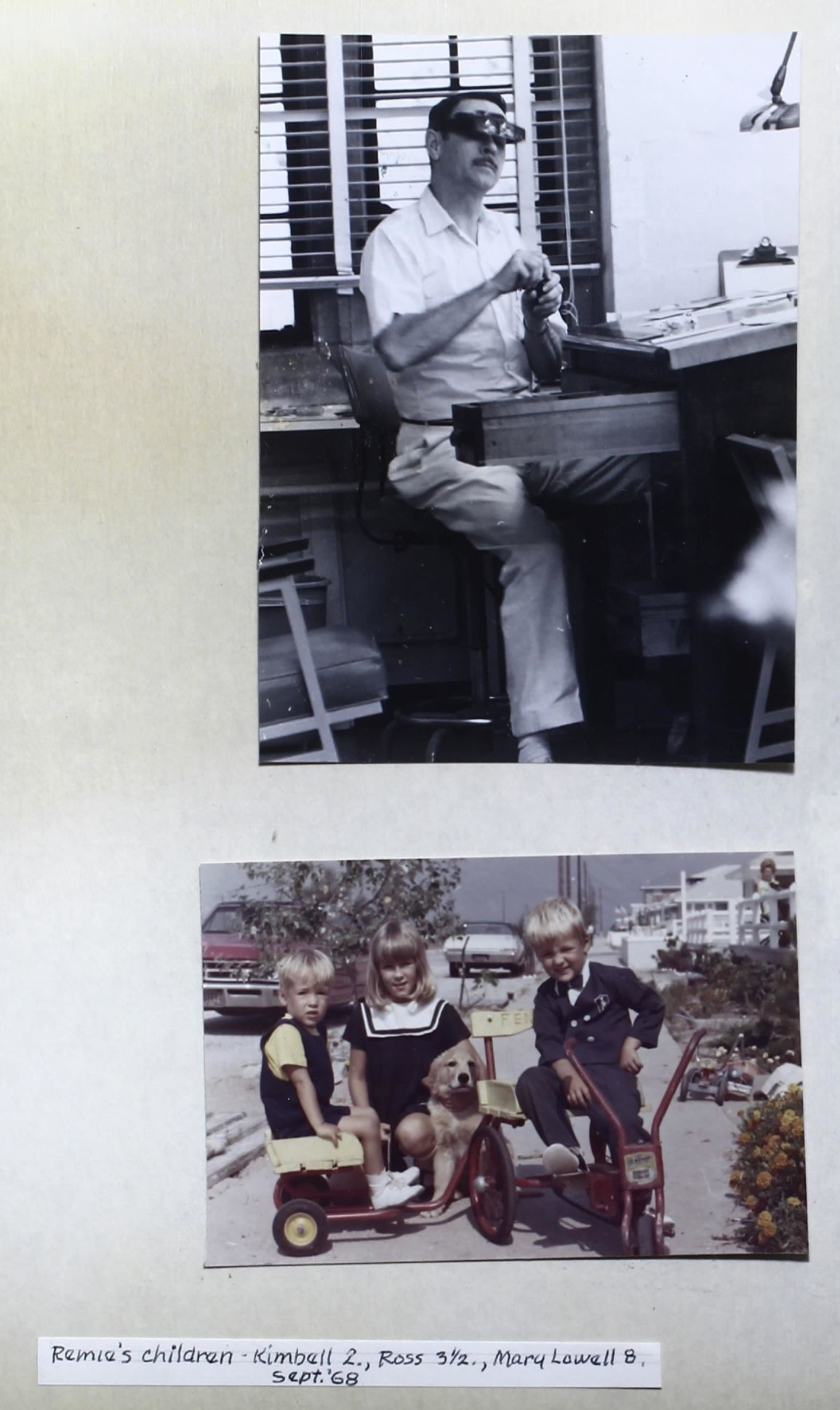The Duke University Medical Center Archives is happy to announce that the Robert L. Blake Papers have been reprocessed and are open for research. Bob Blake, as he was known to many, was a medical illustrator at Duke from 1943 to 1983 and served as Coordinator of the Department of Medical Illustration in the Duke University School of Medicine. The collection contains Blake’s professional papers and original artwork, including pen and ink drawings, pencil sketches, carbon dust drawings, scratchboard engravings, pen trials, watercolors, reprographic materials, photographs, negatives, scrapbooks, and commercially published works. Materials range in date from 1943 to 2005.

In a photograph taken around 1971, Bob Blake is depicted standing at his desk while working on a watercolor painting. Scrapbook, “Medical Illustration, 1943-1964, Audiovisual Education, 1965-1983”: pages 30-35, 1971-1979, Duke University Medical Center Archives.
In reprocessing this collection, an effort was made to provide item-level description and organize materials by theme based on the major areas of Blake’s body of work, including medical and anatomical illustration, designs and lettering, and architectural illustration. Many of the materials are original works Blake created for School of Medicine faculty to use in their textbooks and published articles, as well as brochures, cards, letterhead, and pamphlets he designed for marketing Duke University and Duke Medical Center. There are also several commercial publications and advertisements featuring his work, indicating that Blake’s reach extended well beyond Duke.

Cover illustrations: American Association for the Advancement of Science, “Science,” volume 193, number 4250, July 23, 1976. Duke University Medical Center Archives
Blake began his career at Duke in 1942, when he was stationed here as a conscientious objector and assigned to work as an operating room attendant, serving as a member of the Civilian Public Service (CPS) Unit #61 during World War II. After three months in the operating room, his illustrations for CPS newsletters caught the attention of Elon Clark, then director of Duke’s Department of Medical Art and Illustration. By 1943, Blake gained a position as a medical illustrator at Duke in Clark’s studio, where he built his knowledge of medical anatomy on the job, learning how to use medical illustration as a communication tool to bring one aspect of the body, such as a surgical incision, into focus.
![Unknown body part, “Dr. Dees Urology,” sketches made in operating room: pencil drawings with white ink (4) [8.5 x 11 inches], undated. Duke University Medical Center Archives.](/sites/mcarchives.duke.edu/files/public/Dees%20urology%201.jpg)
![Unknown body part, “Dr. Dees Urology,” sketches made in operating room: pencil drawings with white ink (4) [8.5 x 11 inches], undated. Duke University Medical Center Archives.](/sites/mcarchives.duke.edu/files/public/Dees%20urology%202.jpg)
These undated operating room sketches show Blake’s observations of the surgical field; we see erasure marks, soft pencil lines, tests of different angles, and an inscription below one drawing that reads, “from head of pt. [patient].”
A fascinating aspect of this collection is finding evidence of Blake’s experimentations with materials and artistic technique. Many of Blake’s medical illustrations are carbon dust drawings done on stipple boards, which are cardboard mats covered with a finely textured layer of chalk. In a 1985 oral history with Clark, Blake describes the process of creating a carbon dust drawing, a technique popularized by Max Broedel, renowned medical artist and educator at Johns Hopkins, where Elon Clark trained as an artist. (Elizabeth Broedel, a medical illustrator like her father, headed the first medical illustration division at Duke in the early 1930s.) To make the carbon dust, Blake would sharpen a pencil on sandpaper to create extremely fine powder, which he would then apply to the stipple boards with a brush. Details could be highlighted using either ink or a sharp metal implement to carefully scratch away the layer of brittle chalk, revealing the white underneath.



Undated carbon dust drawings of the eye highlight Blake’s desire to try different materials and mounts, including Color Aid and Albanene tracing papers.
Family and friendship connections permeate this collection. Hildur Blake, Blake’s wife, worked as a nurse at Duke for much of her career over the course of three decades. His son, Kennard also followed in his footsteps and worked at Duke for several decades with audiovisual materials. During the 1960s, in designing and preparing illustrations for Duke’s Poison Control Center exhibit shown around the world, Blake used his three children as the models for pictures of children venturing into dangerous household situations. We also find abundant snapshots Blake took throughout his life of friends and colleagues, celebrating new babies, CPS reunions, parties, milestones, and a puppy.
These pages from a scrapbook kept by Blake, titled “Medical Illustration, 1943-1964, Audiovisual Education, 1965-1983,” highlight the importance Blake placed on his friendships as well as document the social history of the department, which he led following Clark’s retirement in 1971.
The Robert L. Blake Papers are of interest to anyone who wants to learn more about medical illustration techniques, conscientious objectors during World War II and the Civilian Public Service Unit #61, and the social history of Duke’s Division of Educational Media Services. While this collection contains many architectural illustrations depicting Duke buildings, researchers who are interested in Blake’s depictions of the built environment in the greater triangle area--particularly his documentation of tobacco processing and “barns in various stages of decay”--should also explore Robert Blake’s photograph collection at the Durham County Library.
For more about the Archives’ holdings, search and explore our finding aids or collection guides.
For any questions, contact the Archives staff.
This blog post was contributed by Medical Center Archives Intern Kayla Cavenaugh.
References
Educational Media Services Records, Duke University Medical Center Archives.
Robert L. Blake Papers, Duke University Medical Center Archives.
Robert Blake Photographs (NCC.0007). North Carolina Collection, Durham County Library, NC. https://archive.durhamcountylibrary.org/repositories/2/resources/40.



